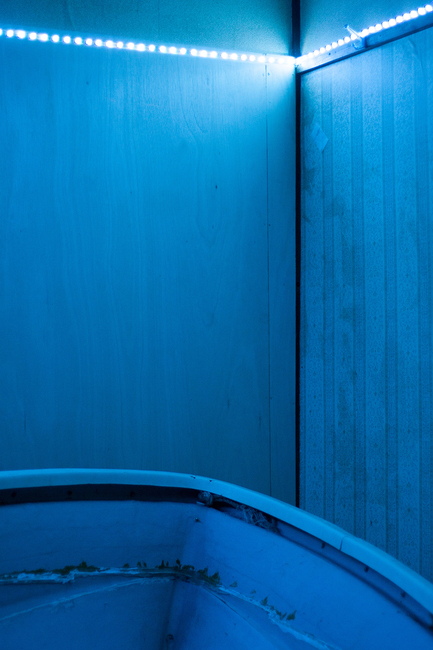
R
E
V N
E
X
T
A detail from the fishing boat at the heart of MUTSUMI TOMOSADA’s installation Nothing Unsinkable Ship (2017), which was wedged firmly into the cramped confines of the Tsushima Art Center, one of the four venues of Tsushima Art Fantasia 2017. All images by Stuart Munro for ArtAsiaPacific.
Located halfway between the Korean Peninsula and Japanese mainland is Tsushima Island. The Japanese archipelago has long been a site of economic and military importance for Korea, China and Russia, and as such has seen both the coming together and clash of these different cultures over the course of its history. Today, with the islands’ younger generations moving to nearby Fukuoka and Nagasaki, Tsushima Art Fantasia is an attempt to establish the islands as sites that document cultural experimentation, reviving and expanding the local culture as it also responds to the pressures of tourism.
Ever since 2015, the event has been organized and co-curated by staff and students from Hiroshima University’s Art Department along with members of the local community. This year was no different.
The festival is spread between four venues (three of which are located in the town of Izuhara Port), including the shop window of Shinwa Bank, the Tsushima Art Center, a former snack bar once frequented by writer Ryōtarō Shiba and the former residence of Meiji-period writer Nakarai Tōsui. The other major venue, located in a disused school in the Hisada area and overlooking the Sea of Japan, is a short drive away through the southern island’s mountains.
Themes of communication and technology are unsurprising for an island with such a vibrant history, and where towns and villages remain detached, separated by mountains and forest terrain. Instead of simply connecting these together, however, the festival aimed to explore the locales for all their peculiarities in intimate detail rather than simply expose them for all to see.
Tsushima Art Fantasia 2017 took place on Tsushima Island from September 2 to October 1, 2017.
To read more of ArtAsiaPacific’s articles, visit our Digital Library.




